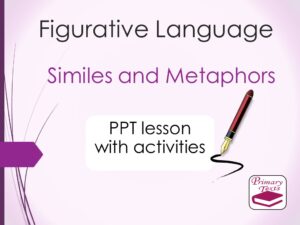Understanding why similes and metaphors are used and the effect they have on the reader can help pupils to develop a deeper understanding of what they are reading. In addition, if students explore using these techniques themselves it can help them to bring their writing to life. In key stage two, similes and metaphors are linked to the following statutory English national curriculum reading comprehension objectives:
• Discussing words and phrases that capture the reader’s interest and imagination (Years 3 and 4)
• Discuss and evaluate how authors use language, including figurative language, considering the impact on the reader (Years 5 and 6)
For years 5 and 6, the non-statutory guidance states: 'Pupils should be taught the technical and other terms needed for discussing what they hear and read, such as metaphor, simile, analogy, imagery, style and effect'.
There are lots of lists of common similes and metaphors on the internet, and while these can be useful, it is important that students see examples of how these techniques can be incorporated into high-quality descriptive writing , especially if our aim is for the students to try using similes and metaphors themselves.
Our 'Similes and Metaphors PowerPoint lesson for KS2' contains examples of the use of similes and metaphors within three different classic texts. Plus, incuded are three tasks which require students to explore using similes and metaphors themselves and to explain their meanings. To access further details about this lesson click here.
This lesson is also available as part of our Figurative Language Bundle for KS2: a five day unit of PPT Lessons exploring figurative language. Click the image below for more details:


